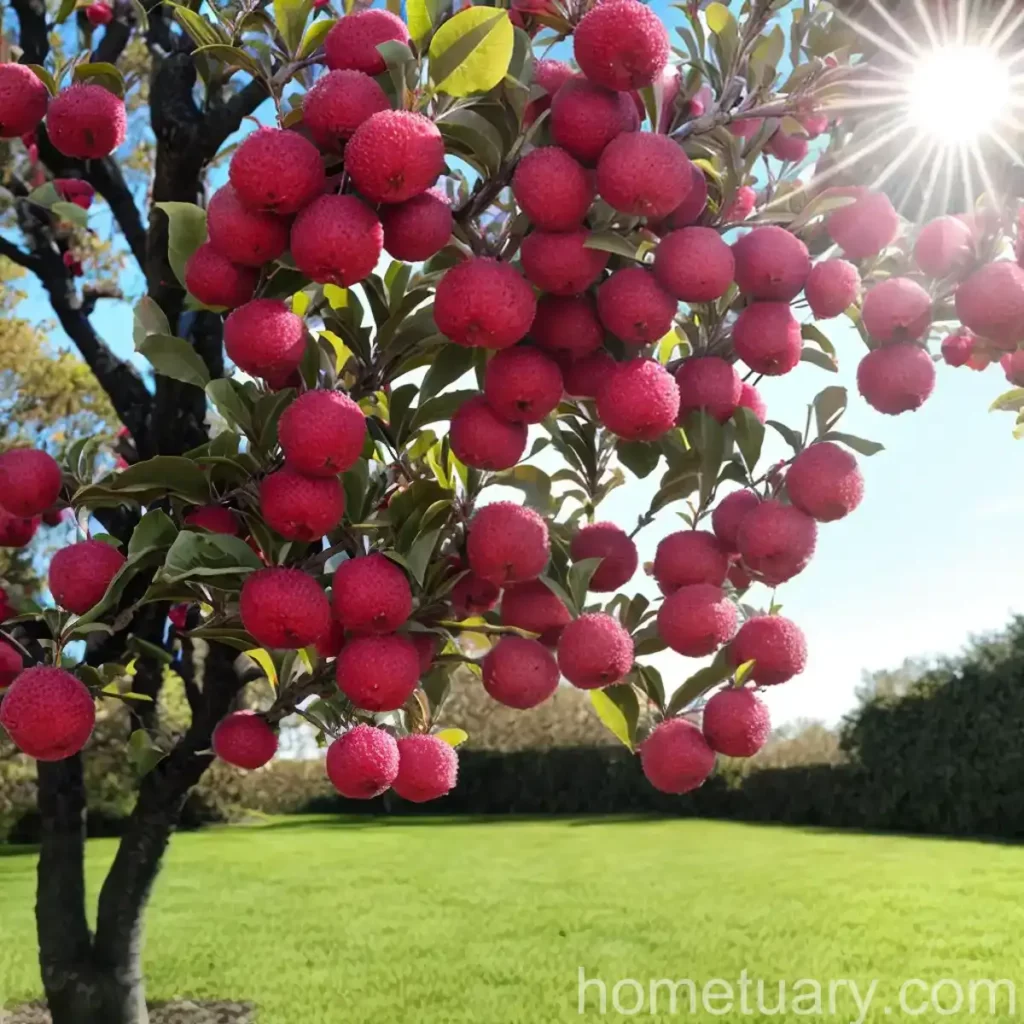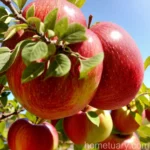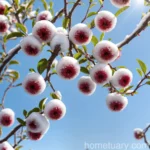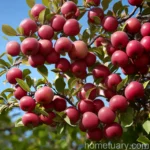Plant Profile: Crabapple (Malus ‘Fozam’ FOX FIRE)
Introduction
The crabapple (Malus ‘Fozam’ Fox Fire) is a stunning ornamental tree known for its beautiful blossoms, colorful fruit, and fantastic fall foliage. This cultivar is a popular choice among gardeners and landscapers, thanks to its versatility, resilience, and aesthetic appeal.
In this comprehensive guide, we will delve into various aspects of the crabapple tree, including its cultural requirements, uses, maintenance, common diseases, pests, and propagation techniques. Whether you are considering adding one to your garden or looking to enhance your existing crabapple landscape, this article will provide you with valuable insights and practical tips to help you make the most of this remarkable plant.
What is a Crabapple?
The crabapple, scientifically known as Malus, is a genus of small deciduous trees and shrubs in the rose family (Rosaceae). These plants are native to the temperate regions of the Northern Hemisphere, including North America, Europe, and Asia. While crabapples are closely related to domestic apples (Malus domestica), they are typically characterized by their smaller fruit size, making them distinct from standard apple varieties.
Crabapples are valued for their ornamental features, including their vibrant spring blooms, decorative fruit, and often striking fall foliage. This makes them popular choices for landscaping, as they provide year-round interest and can enhance the beauty and biodiversity of outdoor spaces.
Key Takeaways – Crabapple (Malus ‘Fozam’ FOX FIRE)
Before delving into specific aspects of the crabapple tree, here are some key takeaways to provide an overview of its characteristics and features:
– The crabapple (Malus ‘Fozam’ Fox Fire) is an ornamental tree known for its beautiful blossoms, colorful fruit, and stunning fall foliage.
– It is a versatile and resilient plant that adds aesthetic appeal to gardens and landscapes.
– Crabapples belong to the Malus genus and are characterized by their smaller fruit size compared to standard apples.
– They are valued for their ornamental features, including vibrant spring blooms, decorative fruit, and striking fall foliage.
Culture
Water
Proper watering is crucial for the health and vitality of crabapple trees. While these trees are generally adaptable to various soil conditions, they thrive in well-drained soil that retains moisture without becoming waterlogged. Here are some essential watering tips for crabapple trees:
– Young Trees: Newly planted crabapple trees require regular watering, especially during the first two years to establish a strong root system. Water deeply to encourage deep root growth and reduce the frequency of watering as the tree becomes established.
– Mature Trees: Established crabapple trees benefit from deep, thorough watering during dry periods. Watering should be done at the base of the tree, avoiding wetting the foliage to prevent fungal diseases.
Sunlight
Crabapple trees thrive in full sun, which is essential for promoting healthy growth, abundant flowering, and fruit development. When selecting a planting location for crabapples, choose a site that receives at least six to eight hours of direct sunlight per day.
Soil
Crabapple trees are adaptable to a wide range of soil types, but they prefer well-drained, loamy soil with a slightly acidic to neutral pH. Before planting, it is advisable to amend the soil with organic matter to improve its texture, fertility, and drainage. Regular applications of mulch around the base of the tree can help maintain soil moisture and regulate soil temperature.
Fertilizer
Proper fertilization can contribute to the overall health and vigor of crabapple trees. A balanced, slow-release fertilizer formulated for trees and shrubs can be applied in early spring before new growth appears. It is essential to follow the manufacturer’s instructions regarding application rates and methods to avoid over-fertilization, which can lead to excessive vegetative growth at the expense of flowering and fruiting.
Uses
Crabapple trees are valued for a variety of uses in landscaping, horticulture, and the culinary arts.
Landscaping
The ornamental qualities of crabapple trees make them popular choices for adding visual interest to landscapes, gardens, and public spaces. Their stunning blossoms, colorful fruit, and beautiful fall foliage contribute to their aesthetic appeal, making them ideal for use as specimen trees, accents, or focal points in garden designs.
Culinary Uses
While crabapples are generally too tart and astringent to be eaten fresh, they can be used in culinary preparations, such as jams, jellies, sauces, and preserves. The high pectin content in crabapples makes them excellent for creating flavorful and aromatic products, adding a unique touch to a variety of dishes and recipes.
Pruning
Pruning is an essential aspect of crabapple tree care, as it helps maintain a healthy and attractive tree structure, promotes optimal flowering and fruiting, and prevents disease and pest issues. Here are some key considerations for pruning crabapple trees:
– Timing: Pruning is best done during late winter or early spring while the tree is still dormant. This allows for better visibility of the tree’s structure and reduces the risk of disease transmission, particularly for fire blight.
– Techniques: Remove any dead, damaged, or diseased branches first, followed by any crossing or rubbing branches. Consider thinning out the canopy to improve air circulation and light penetration, which can help minimize disease problems and enhance fruit production.
Propagation
Crabapples can be propagated through various methods, including seeds, cuttings, and grafting. Here are some key considerations for propagating crabapple trees:
Seeds
- Collect ripe crabapple fruits in the fall and extract the seeds for propagation.
- Cold stratify the seeds by storing them in a moist, cold environment for a specific period to mimic natural winter conditions, which can help break seed dormancy and promote germination.
Cuttings
- Take semi-hardwood cuttings from healthy crabapple trees during the growing season.
- Prepare the cuttings and treat them with a rooting hormone before planting them in a well-draining propagation medium.
Grafting
- Grafting is a common method for reproducing specific crabapple cultivars with desirable traits.
- Select a suitable rootstock and scion wood, and follow established grafting techniques to ensure successful union and growth.
Container Popularity
Crabapple trees are also suitable for growing in containers, making them versatile options for urban gardens, patios, and small outdoor spaces. When choosing a container for a crabapple tree, select one that is large enough to accommodate the root system and provides adequate drainage. Container-grown crabapples require attentive care, particularly in terms of watering and fertilization, to ensure their health and vitality.
Common Diseases
While crabapple trees are generally resilient, they are susceptible to certain diseases that can affect their health and appearance.
Apple Scab (Venturia inaequalis)
Apple scab is a fungal disease that affects crabapple trees, causing unsightly dark lesions on leaves and fruit. It thrives in moist conditions and can lead to defoliation and diminished tree vigor if left untreated.
Fire Blight (Erwinia amylovora)
Fire blight is a bacterial disease that can affect crabapple trees, particularly during periods of warm, humid weather. It causes wilting, browning of leaves and shoots, and can lead to dieback if not promptly addressed.
Cedar Apple Rust (Gymnosporangium juniperi-virginianae)
This fungal disease affects crabapple trees and is characterized by the development of orange spore-bearing structures on leaves and fruit. It requires the presence of juniper or cedar hosts to complete its life cycle and can lead to premature leaf drop and reduced tree vigor.
Disease Diagnosis
Diagnosing and identifying diseases in crabapple trees require careful observation and, if necessary, consulting with a horticulture professional or plant pathologist. Key signs and symptoms, such as leaf spots, cankers, wilting, and abnormal growth, should be closely examined to narrow down possible disease issues. Additionally, information on the tree’s cultural practices, site conditions, and history can provide valuable clues in diagnosing and addressing disease problems effectively.
Common Pests
Crabapple trees can be susceptible to certain insect pests that can impact their growth and overall health.
Aphids
Aphids are small, sap-sucking insects that can infest crabapple trees, causing distorted growth, honeydew secretion, and sooty mold development.
Spider Mites
Spider mites are tiny arachnids that can cause stippling and discoloration of crabapple leaves, particularly in hot, dry conditions.
Caterpillars
Various caterpillar species, such as the fall webworm and tent caterpillars, can defoliate crabapple trees if present in large numbers.
Botanist’s Tips
As a plant scientist, here are some additional tips and recommendations for cultivating and caring for crabapple trees:
– Selection: When selecting a crabapple cultivar, consider factors such as disease resistance, fruit color, and growth habit to ensure that it suits your specific landscape and design preferences.
– Companion Planting: Incorporate complementary plants and perennials around crabapple trees to enhance their visual appeal, provide pollinator habitat, and create a balanced and harmonious garden ecosystem.
– Wildlife Habitat: Crabapple trees can serve as valuable sources of food and shelter for birds and other wildlife, contributing to the ecological diversity and vitality of outdoor spaces. Encouraging wildlife-friendly practices can further enhance the ecological value of crabapple landscapes.
Fun Facts
To add an element of interest and intrigue, here are some captivating and lesser-known facts about crabapple trees:
– The term “crabapple” is believed to have originated from the Old English word “crabba,” which refers to the small, sour fruit of wild apple trees.
– Some crabapple trees exhibit exceptional fall color, ranging from vibrant reds and oranges to rich golds and purples, adding a spectacular display to autumn landscapes.
– Certain crabapple cultivars are renowned for their attractive weeping or cascading growth habits, creating a graceful and elegant presence in gardens and parks.
Links to External Resources
For further in-depth information, resources, and research on crabapple trees, consider exploring the following external links:
– The American Crabapple Collection
– Crabapples for the Upper Midwest
– Planting and Care of Crabapple Trees
– Malus × zumi ‘Calocarpa’ and ‘White Angel’
By providing comprehensive insights into the cultural requirements, uses, maintenance, diseases, and propagation of the crabapple tree, this guide aims to equip readers with the knowledge and tools needed to cultivate and appreciate these remarkable ornamental trees. Whether you are a dedicated gardener, landscape professional, or simply an admirer of the beauty of crabapples, understanding the intricacies of their care and stewardship can pave the way for a more enriching and enjoyable horticultural experience.















